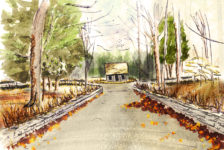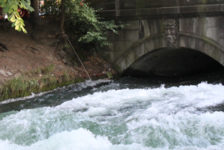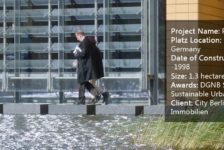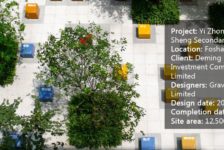Pavilion at the Ljubljanica Embankment, BB Arhitekti, Ljubljana, Slovenia For hundreds of years, European cities relied on the rivers they were built around for transportation and for sending and receiving goods. In the modern world, these rivers have become novelties or tourist attractions, and locals have become out of touch with the grand bodies of water that helped form their cities. Such was the case for the Ljubljanica River in Slovenia until the city dreamed up a way to reconnect the people to the river.
Urban Waterfront Regeneration to Fulfill Jože Plečnik’s Dream
The riverbank had not been touched since the 1930s, when the architect Jože Plečnik defined the river with his monumental buildings, open squares, canals, embankments, and riverside parks. Plečnik envisioned the river as the center of the city and sought to transform Ljubljana into a cultural center. But by the 21st century, his vision had died. The river lacked modern infrastructure, and the car had become the primary means of transportation, tarnishing the allure of his walkable city. Those changes, combined with a decline in businesses due to urban sprawl, left the city in desperate need of help.
20 Million Euro Investment in Urban Waterfront Regeneration
So city officials stepped in with a plan to rebuild the city. In 2004, Ljubljana City Council decided to invest more than 20 million euros to rebuild the riverbank, with the hope that the city would experience an economic and social revival. One of the interventions included a steel pavilion that was mounted at the Petkovškovo embankment as a temporary public space meant to reconnect the city’s street level — and pedestrians — to the river. The new public space was also meant to serve as a social experiment to test the responses of people to such a space and to the river.
What has been the outcome of the experiment? Shortly after its 2007 installation, visitors began to flock to the space and, as it grew in popularity, other public projects began to pop up along the riverbank. The river slowly began to be reconnected with the people, and the city began to experience a new burst of life. Related articles:- Top 10 Reused Industrial Landscapes
- Community Turn Abandoned Industrial Site into Public Park
- Industrial Site Transforms into Beautiful Landscape
- Urban Design by Alex Krieger
- Digital Drawing for Landscape Architecture by Bradley Cantrell
Article by Erin Tharp Return to Homepage
Published in Blog














